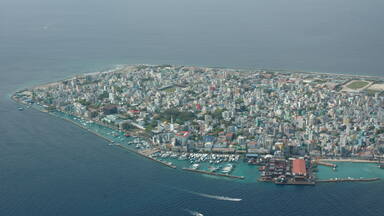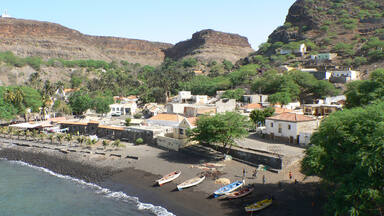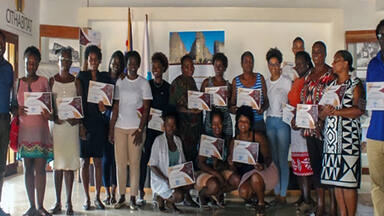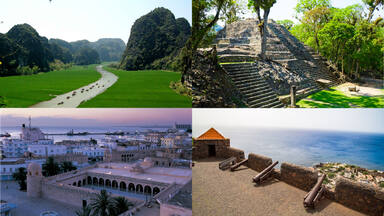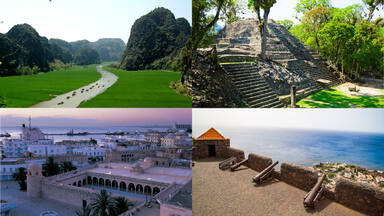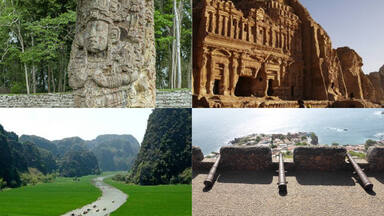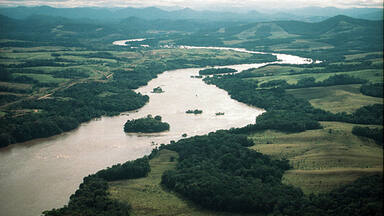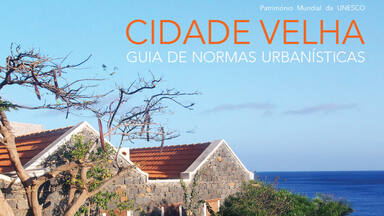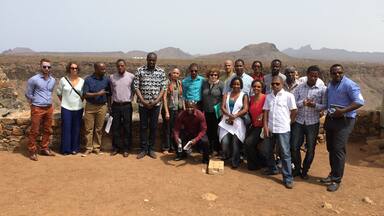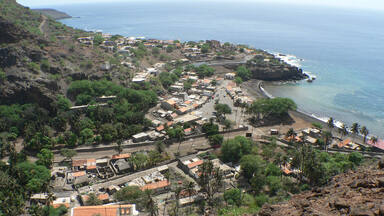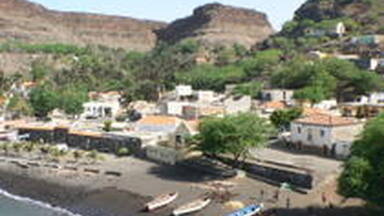Cidade Velha, Historic Centre of Ribeira Grande
Cidade Velha, Historic Centre of Ribeira Grande
The town of Ribeira Grande, renamed Cidade Velha in the late 18th century, was the first European colonial outpost in the tropics. Located in the south of the island of Santiago, the town features some of the original street layout impressive remains including two churches, a royal fortress and Pillory Square with its ornate 16th century marble pillar.
Description is available under license CC-BY-SA IGO 3.0
Cidade Velha, centre historique de Ribeira Grande
La ville de Ribeira Grande, rebaptisée Cidade Velha à la fin du XVIIIème siècle, a été la première ville coloniale construite par les Européens sous les tropiques. Située au sud de l'île de Santiago, elle conserve une partie de son tracé viaire et d'importants vestiges, dont deux églises, une forteresse royale et la place du Pilori avec sa colonne de marbre de style manuélin.
Description is available under license CC-BY-SA IGO 3.0
قلعة فيلها، المركزي التاريخي لمدينة ريبيرا غراند
مدينة ريبيرا غراند، التي أعيدت فسميت فيلها في أواخر القرن الثامن عشر، كانت أول مدينة بناها الاستعمار الأوروبي في المناطق المدارية. تقع ريبيرا غراند في الجنوب من جزيرة سانتياغو، لا تزال تحافظ على بعض ملامحها التاريخية الأصلية وبعض المعالم القديمة الهامة من بينها كنيستان، و القلعة الملكية مع هيكلها في الساحة المزخرفة حسب القرن السادس عشر وعمودها الرخام
source: UNESCO/CPE
Description is available under license CC-BY-SA IGO 3.0
Cidade Velha, Centro histórico de Ribeira Grande
La ciudad de Ribeira Grande, bautizada de nuevo con el nombre de Cidade Velha a finales del siglo XVIII, fue el primer establecimiento colonial europeo asentado en la zona tropical. Situada en la parte meridional de la Isla de Santiago, esta ciudad conserva parte de su trazado urbano primitivo, en el que subsisten edificios y espacios admirables: dos iglesias, una fortaleza real y la Plaza de la Picota con su rollo de mármol esculpido en estilo manuelino (siglo XVI).
source: UNESCO/CPE
Description is available under license CC-BY-SA IGO 3.0
シダーデ・ヴェリヤ、リベイラ・グランデの歴史都市
source: NFUAJ
Cidade Velha, historisch centrum van Ribeira Grande
Source: unesco.nl
Outstanding Universal Value
Brief Synthesis
Cidade Velha, historic centre of Ribeira Grande demonstrates Outstanding Universal Value: Ribeira Grande was the first European colonial town to be built in the tropics, and marks a decisive step in European expansion at the end of the 15th century towards Africa and the Atlantic area. Ribeira Grande was subsequently, in the 16th and 17th centuries, a key port of call for Portuguese colonisation and its administration. It was an exceptional centre in the routes for international maritime trade, included in the routes between Africa and the Cape, Brazil and the Caribbean. It provides an early image of transcontinental geopolitical visions. Its insular position, isolated but close to the coasts of Africa, made it an essential platform for the Atlantic trade of enslaved persons of modern times. A place of concentration of enslaved persons and the inhuman practices of the trade of enslaved persons, Ribeira Grande was also exceptional in terms of the intercultural encounters from which stemmed the first developed Creole society. The valley of Ribeira Grande experimented with new forms of colonial agriculture on the boundary between the temperate and tropical climates. It became a platform for the acclimatisation and dissemination of plant species across the world.
Criterion (ii): The monuments, the remains still present in Ribeira Grande and its maritime and agro-urban landscapes, are testimony to its considerable role in international trade associated with the development of European colonial domination towards Africa and America and the birth of Atlantic triangular trade. They are testimony to the organisation of the first intercontinental maritime trade, and Ribeira Grande’s role as centre for the acclimatisation and dissemination of numerous plant species between the temperate and tropical zones, and between the various continents.
Criterion (iii): The urban, maritime and landscape of Ribeira Grande provides eminent testimony to the origins and the development of over three centuries of Atlantic trade of enslaved persons in modern times and its relationships of domination. It was a major place for its commercial organisation and the early experience of using enslaved persons to develop a colonial territory. The mixing of human races and the meeting of African and European cultures gave birth to the first Creole culture.
Criterion (vi): Ribeira Grande is directly associated with the material manifestation of the history of the enslavement and trafficking of African peoples, and with its considerable cultural and economic consequences. Ribeira Grande was the cradle of the first fully fledged mixed-race Creole society. Creole culture then spread across the Atlantic, adapting to the different colonial contexts of the Caribbean and Americas. Its forms affected many fields including the arts, social customs, beliefs, the pharmacopoeia, and cooking techniques. Ribeira Grande is an important initial link in an intangible heritage shared by Africa, the Americas and Europe.
Integrity and authenticity
The authenticity and integrity of the property is generally acceptable, but its fragility must be emphasised, together with the necessity of an ongoing policy of rehabilitation.
Management and protection requirements
The property’s management system is satisfactory. However, its legal protection must be completed and the practical methods for the operation of the recent inter-agency management structures specified.

